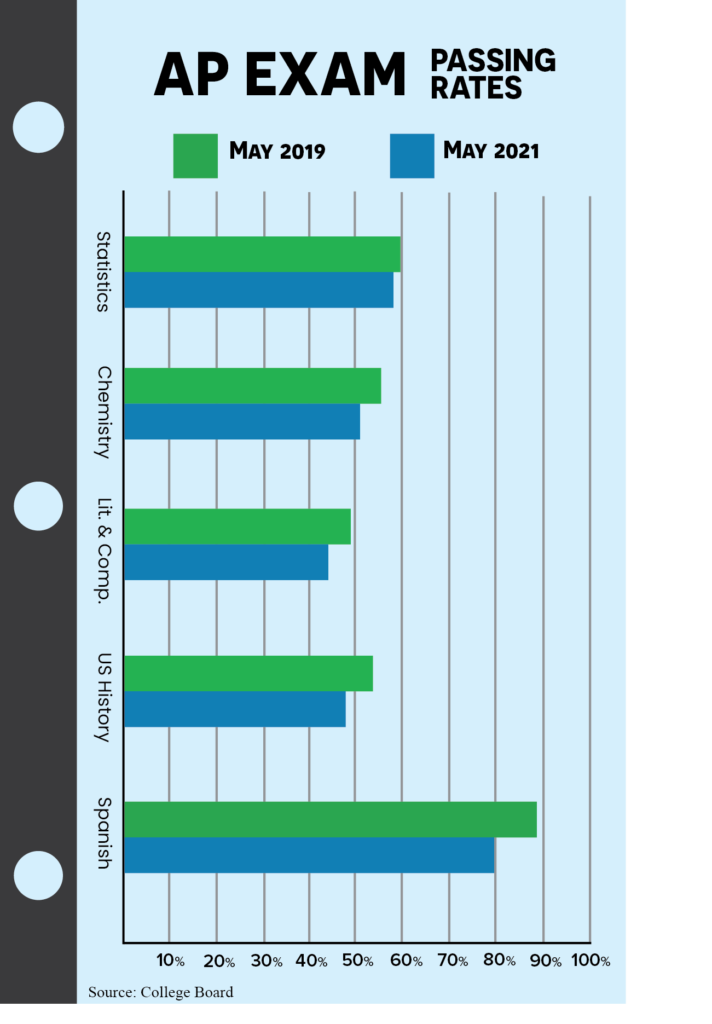By Ethan Lee & Brianna Tong,
Staff Writers

Schools moved to an online learning format in response to the COVID-19 pandemic in March 2020. As a result, many students experienced learning loss, causing them to struggle on tests and leaving them unprepared for the future. “I’ve had many of my friends and classmates talk about how the online format made it more difficult to learn,” senior Jonathan Wang said. “I feel like some teachers had so much trouble using the technology, and the way that things were being taught were just not as engaging online as they would be in person.”
The shift to distance learning caused several issues. Technical problems and Zoom fatigue left many students disengaged in their courses.
Distance learning also resulted in less class time overall for students. During distance learning, each class met twice a week for a total of 160 minutes, while pre-pandemic classes met five times a week for a total of 250 minutes, resulting in a loss of nearly two whole days of class per week. However, students were able to meet with teachers during office hours on Friday for additional aid.
“I did feel a little less confident coming back to school because online learning had a different format,” junior Stephanie Chung said. “During digital learning, I felt as if I wasn’t able to comprehend as much information that I would in-person. Whenever I needed assistance on something I couldn’t go to them after school, but instead had to wait a certain day to ask my questions.”
TCHS provided laptops for students to take home for distance learning, lessening the strain on disadvantaged families. However, wealthier families that could afford faster internet connection and better personal devices could avoid technology issues that lower-income students could not.
Despite the challenges of distance learning, students and teachers found ways to prevent learning loss. Group activities and breakout rooms were a common tactic meant to eliminate the isolation of distance learning by bringing together students in collaborative discussions and exercises. Teachers also used Nearpod to facilitate interactive activities and Explore Learning Gizmos to simulate experiments.
“Collaborating in class made me more excited for class because this was the time where I would be able to freely have an open conversation with a group of people, rather than talk in front of the whole class.” Chung said. “Sharing ideas helped me feel more creative and confident in my work which was good because finding creativity was scarce during the pandemic.”
Many educators had to reduce their lesson plans and lessen the amount of learning material. For instance, in science classes, students were unable to conduct physical experiments. Because of reduced class time during distance learning, many teachers spent time reviewing material covered in previous curricula.
“I didn’t see learning loss during virtual learning,” chemistry teacher Debbie Gewecke said. “It’s now, the following year, where there’s loss. The incoming students are doing what they can, but they didn’t cover as much and they’re not remembering things that they were taught. I try to encourage them to take advantage of office hours and resources like Canvas so I can help individuals who do have learning issues.”
